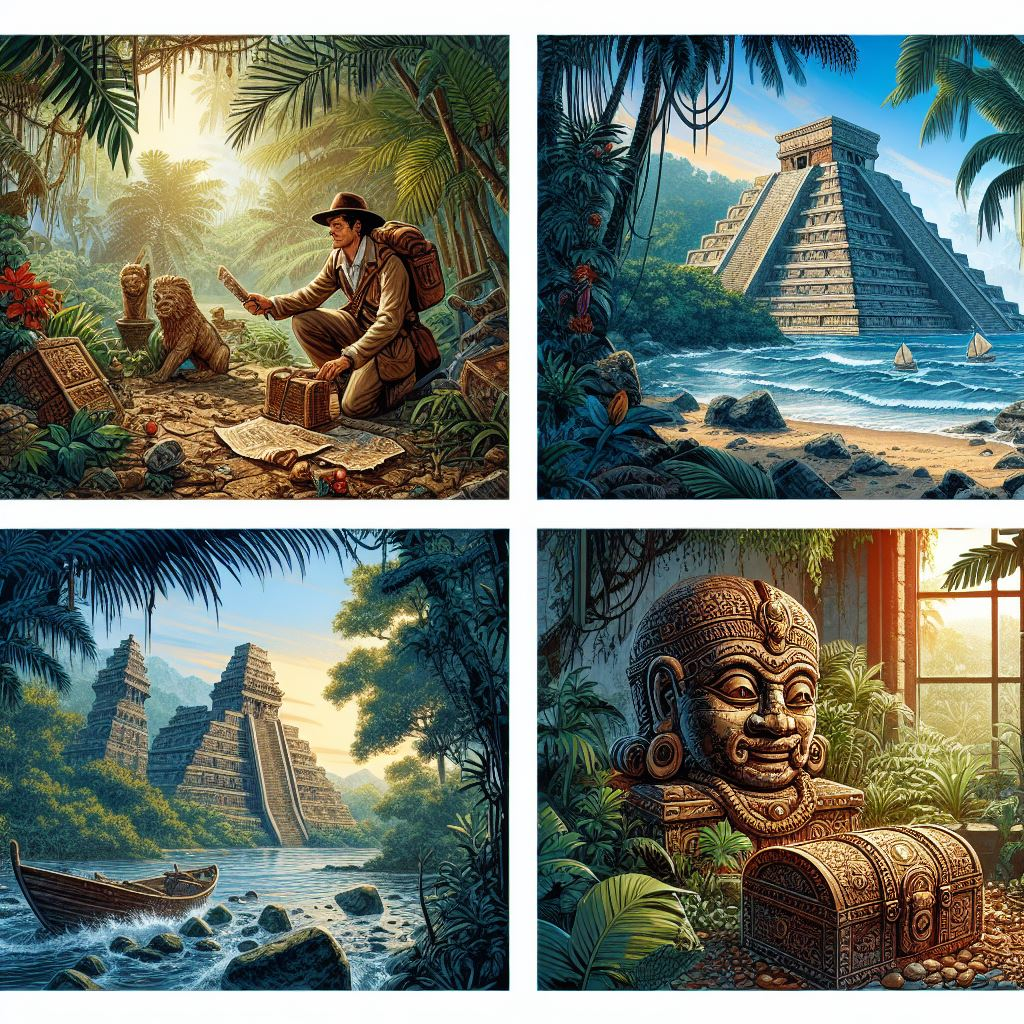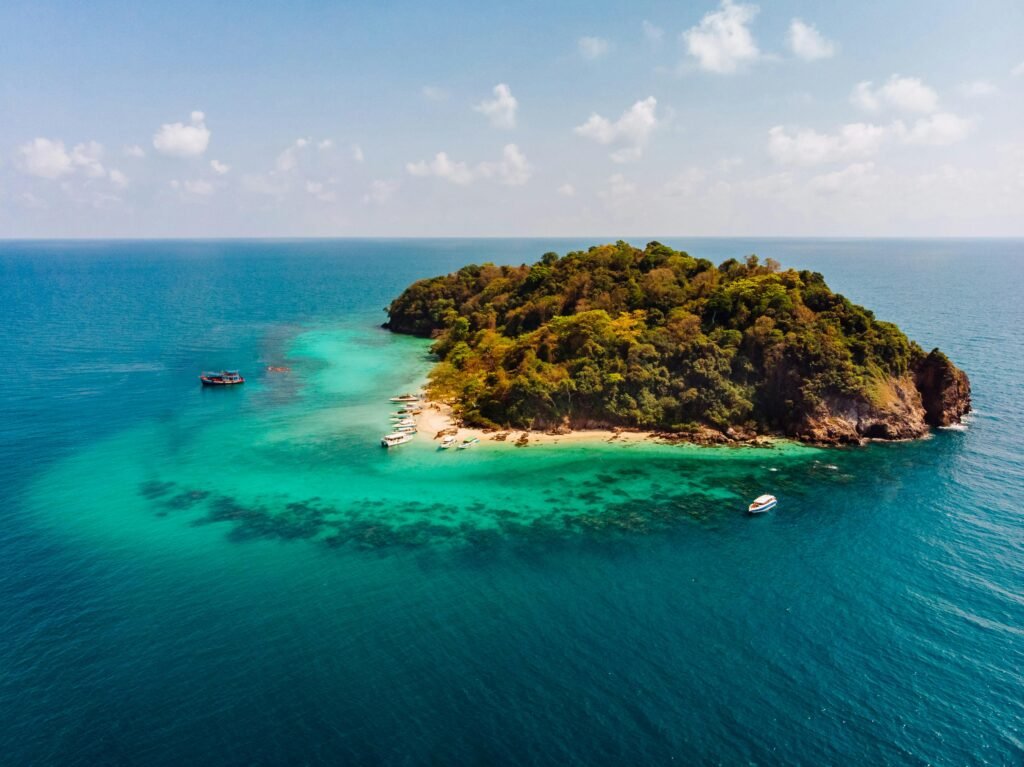There’s something undeniably alluring about the phrase “uncharted islands.” It conjures images of hidden coves, forgotten shipwrecks, and the compelling promise of discovering lost to time. These hidden islands, tucked away in the vast expanse of the ocean, have played a fascinating role in shaping our knowledge of history. Historical discoveries on uncharted islands offer remarkably well-preserved glimpses into the past, revealing ancient civilizations, unique adaptations, and captivating stories of survival.

Why Uncharted Islands Hold a Special Place in History
The isolation that once kept these islands hidden from the world makes them so valuable to historians and archaeologists. Unlike heavily populated continents, uncharted islands often remained untouched by the sweeping trends and conflicts that altered the course of history elsewhere. This allows them to preserve snapshots of cultures, technologies, and ecological practices from bygone eras.
Moreover, uncharted islands boast unique ecosystems that force inhabitants to adapt ingeniously. Their tools, settlements, and even their beliefs would have been shaped by the resources the island provided. The challenges of island life also make the artifacts found there all the more precious – evidence of humanity’s remarkable resilience and resourcefulness.
Notable Examples of Historical Discoveries on Uncharted Islands
Let’s delve into a few of the most iconic examples of the treasures that uncharted islands have yielded:
Easter Island (Rapa Nui):
Easter Island, famous for its enigmatic Moai statues towering figures carved from volcanic stone, has captivated the world. These statues tell a story of a once-thriving Polynesian society, but they also hold clues to the island’s potential ecological decline, a cautionary tale for our modern world.
Pitcairn Island:
Settled by the mutineers of the HMS Bounty and their Tahitian companions, this speck in the Pacific Ocean witnessed a unique experiment in society-building cut off from the rest of the world.
Henderson Island:
Though uninhabited today, remnants of Polynesian settlements and tools on Henderson Island shed light on ancient trade networks and raise questions about why this once-occupied island was ultimately abandoned.
Tristan da Cunha:
This remote volcanic archipelago in the South Atlantic is Earth’s most isolated inhabited place. Exploring its history reveals a remarkable tale of human survival, self-reliance, and creating a new home far from familiar shores.
Types of Historical Discoveries on Uncharted Islands
Uncharted islands are akin to open-air museums, waiting to be explored. The specific discoveries made on each island can vary greatly, but some of the most common and significant finds include:
Ancient Ruins:
Lost cities, temples, forts, or even humble dwellings hold clues to daily life, social structures, and the beliefs of past island societies. The degree of preservation on uncharted islands often rivals even famous mainland archaeological sites.
Artifacts:
The tools, pottery, jewelry and everyday objects left behind by past inhabitants provide a tangible connection to their world. Artifacts reveal their ingenuity, resourcefulness, artistic traditions, and the materials they had at their disposal.
Shipwrecks:
Uncharted islands were often hazards to navigation in centuries past. Shipwrecks scattered around their shores offer glimpses into maritime history, trade routes, and the naval technology of different eras. Some might even hold forgotten treasures.
Human Remains and Burial Sites:
These sensitive but potentially informative sites aid researchers in understanding the ancestry, health, and potential causes of the decline or disappearance of island populations. Respectful and ethical archaeological practices are paramount when dealing with such discoveries.
Challenges and Ethics of Exploring Uncharted Islands
While the lure of discovering lost mysteries is strong, exploring uncharted islands comes with a unique set of responsibilities:
Environmental Protection:
Island ecosystems are often delicate and irreplaceable. Archaeologists and historians must greatly minimize their footprint and avoid introducing invasive species or damaging fragile habitats.
Respecting Indigenous Cultures:
Some uncharted islands may still be home to descendants of past inhabitants. Consultation, permission, and sensitivity to their cultural connection to the land and its history are essential.
Preservation vs. Excavation:
The decision of whether to leave a site undisturbed or undertake excavation is a delicate one. The goal is to learn as much as possible while safeguarding these precious fragments of history for future generations.

How Modern Technology Aids Discoveries on Uncharted Islands
A few decades ago, exploring uncharted islands was painstakingly slow and often dangerous. However, technological advancements have revolutionized how we search for and study historical sites on these remote landmasses. Here’s how:
Satellite Imagery:
High-resolution satellite images allow researchers to identify areas of interest from afar. Anomalies in vegetation patterns, potential structures, and even submerged features can be spotted, guiding expeditions to the most promising locations.
Drones:
These versatile tools make aerial surveys easier and cheaper than ever before. Drones can map difficult-to-reach ruins, create 3D models of sites, and even detect subtle changes in the landscape that might point to buried artifacts.
Underwater Exploration:
Advances in scuba diving, sonar, and remotely operated vehicles (ROVs) enable exploration of shipwrecks and even submerged settlements lost to rising sea levels in the distant past.
Advanced Dating Techniques:
Radiocarbon dating, thermoluminescence, and other scientific methods now allow for more precise dating of artifacts and structures. This helps build a more accurate timeline of an island’s past and potential connections to other civilizations.
Biodiversity and Unique Ecosystems
Flora and Fauna of the Unknown: Discovering New Species
The Galapagos finches, studied by Charles Darwin, showcase this process beautifully. These finches, all descended from a common ancestor, have diversified into 14 distinct species on different Galapagos Islands. Each species has beaks specifically adapted to the type of food most readily available on their island – crushing seeds, extracting insects from trees, or gathering nectar. Island isolation allowed the finches to evolve into a remarkable display of adaptive radiation. Island isolation creates a unique evolutionary playground. Limited gene pools, intense selection pressures, reduced competition, and rapid evolution contribute to the emergence of fascinating and often bizarre species found nowhere else on Earth. These creatures are a testament to the power of natural selection and the incredible adaptability of life.
Ecosystems in Isolation: Evolutionary Marvels
Fragile Ecosystems
Island ecosystems often exist in a delicate balance due to several key factors: Limited Resources, Vulnerability to Disruptions, and Susceptibility to Invasive Species. To survive in these conditions, island species often develop intricate relationships:
- Symbiosis: Mutualistic relationships, where both organisms benefit, are common. Unique pollinator-plant pairings might emerge, like a bird with a specialized beak shape designed to access the nectar of a specific island flower. Seed-dispersing birds and fruit-bearing trees may have a tightly linked co-dependence.
- Filling Unique Niches: With less competition, island species may evolve to exploit resources in ways unseen elsewhere. A lizard that becomes omnivorous, feeding on insects, nectar, and fruit, fills a niche that might be split between multiple species on the mainland.
Humans have been one of the most disruptive forces to island ecosystems. Invasive species, introduced either accidentally or intentionally, can wreak havoc:
- Competition and Predation: Invasive rats, goats, or cats brought aboard human ships prey on native birds, reptiles, and insects with no evolved defenses. Invasive plants can choke out delicate native vegetation, altering the entire habitat structure.
- Disease Introduction: Certain diseases have often been absent from islands. The arrival of just a few infected individuals (livestock, pets, or even humans) can spread illness to native species with devastating consequences.
- Cascading Effects: The disruption of a single species can have ripple effects throughout the entire ecosystem. The loss of a critical pollinator can impact multiple plant species, affecting the animals that rely on those plants for food, and so on.
Conclusion
Uncharted islands hold a timeless fascination, promising to unveil chapters of history forgotten by the wider world. The unique circumstances of these islands have preserved evidence of human ingenuity, adaptation, and vanished cultures. As technology advances, we can expect even more astonishing discoveries from these remote corners of the globe. Knowing that countless islands may still hold untold stories waiting to be revealed, there’s a sense of wonder. It’s also a reminder to respect these precious pieces of our global heritage, ensuring their stories echo through the ages.
FAQs
Q: Are there any uncharted islands left?
A: While the age of great maritime discoveries is essentially over, there may still be small, uninhabited, and poorly mapped islands, particularly in remote ocean regions. However, even well-known islands can hold undiscovered historical sites.
Q: What is the most famous uncharted island?
A: Easter Island (Rapa Nui) is arguably the most famous uncharted island due to its mysterious Moai statues. However, many other islands hold fascinating historical treasures.
Q: What happens when a new island is discovered?
A: The discovery of a new island usually prompts scientific interest. Researchers investigate its geology, flora, fauna, and potential for archaeological discoveries. Depending on the island’s location, different nations may claim it.
Q: Can I explore an uncharted island?
A: Some uncharted islands can be visited as part of organized tours. However, many are protected due to ecological fragility or the need for careful archaeological research.
Q: Is it ethical to excavate uncharted islands?
A: Excavation on uncharted islands raises complex ethical questions. It must balance uncovering knowledge with preserving sites, respecting indigenous people, and minimizing environmental damage.


